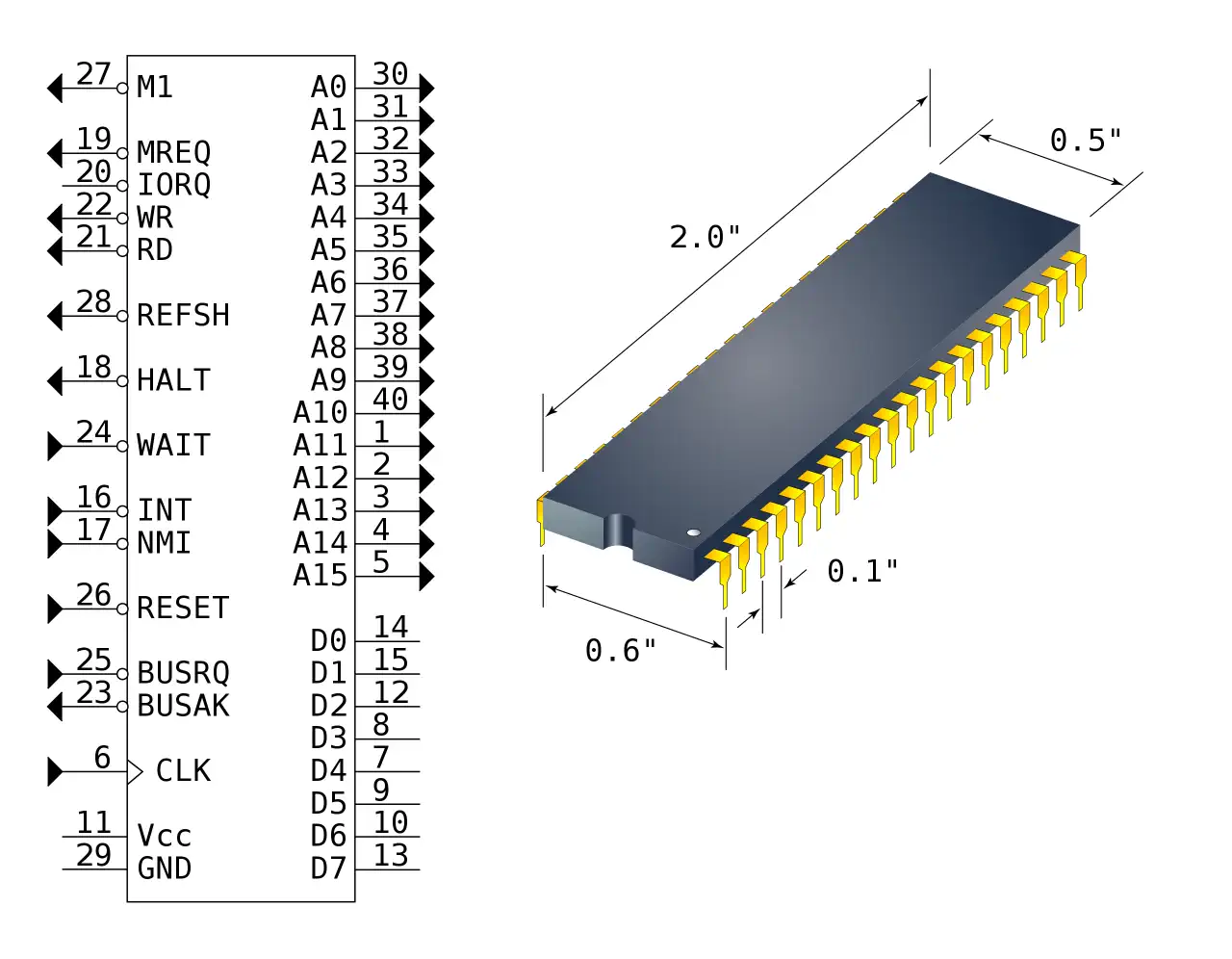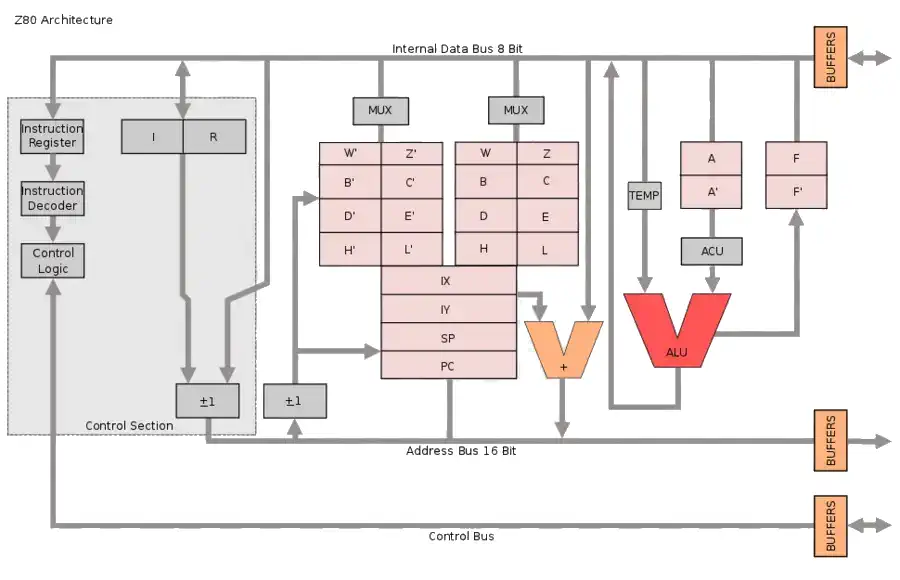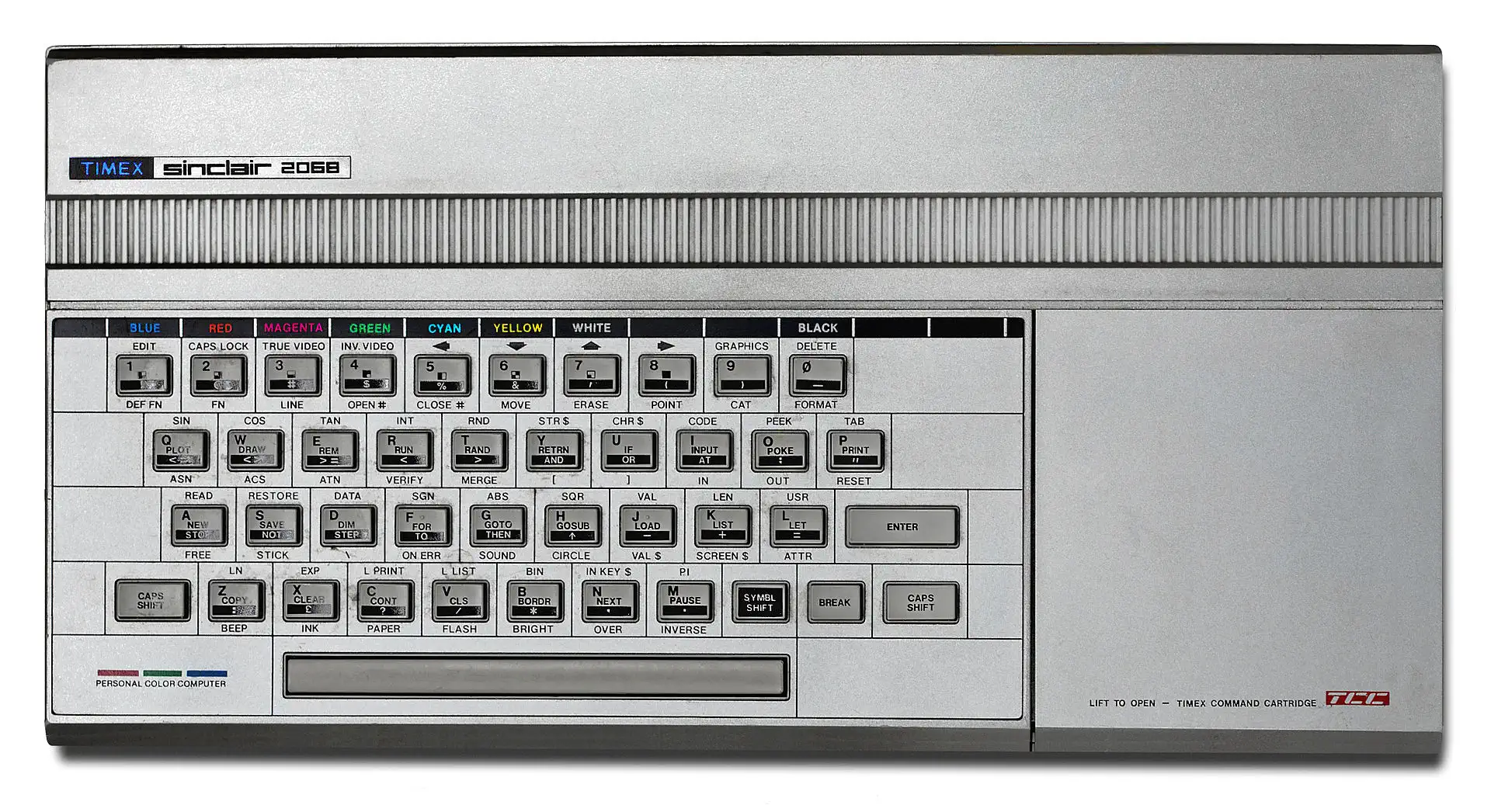Programmable Sound Generator (AY-3-8910 compatible PSG)
The AY-3-8910 is a 3-voice Programmable Sound Generator, or PSG. It was designed by General Instruments in 1978 for use with their own 8-bit PIC1650 and their 16-bit CP1610 computers.
The PSG is widely used in many arcade cabinets, pinball machines, and many micro-computers. Here is a list of some of the major brands of computer that used the AY-3-8910:
- Intellivision
- Vectrex
- Amstrad CPC range
- Oric-1
- Color Genie
- Elektor TV Games Computer
- All MSX-1 and MSX-2 computers
- ZX Spectrum home computers
General Instrument spun of MicroChip Technology in 1987 and the chip was sold under the MicroChip brand, and licensed to Yamaha as the YM2149F which the Atari ST range of computers use. Functionally the PSG is very similar to the Texas Instruments SN76489.
Variants:
-
AY-3-8910
Comes with 2 general purpose 8-bit parallel I/O ports, used for Keyboard and Joystick in for instance MSX. -
AY-3-8912
Same chip, but in a 28-pin package. Parallel port B is not connected to save cost and space. -
AY-3-8913
Same chip, but in a 24-pin package. Both parallel ports are not connected. -
AY-3-8914
The AY-3-8914 has the same pinout and is in the same 40-pin package as the AY-3-8910, except the control registers on the chip are shuffled around, and the 'expected input' on the A9 pin may be different. It was used in Mattel's Intellivision console and Aquarius computer. -
AY-3-8930
Backwards compatible but BC2 pin is ignored
YM2149F -
YM3439-D
CMOS version of the Y2149 in 40-pin DIP -
YM3439-F
CMOS version of the Y2149 in 44-pin QFP -
YMZ294
Variant of the YM3249 in an 18-pin package. Parallel ports not connected, and all sound channels mixed on 1 port. -
T7766A
Toshiba variant of the AY-3-8910, fully compatible. Used in some MSX models. - Winbond WF19054, JFC95101, and File KC89C72: Fully compatible versions of the AY-3-8910 produced for slot machines.
Yamaha Produced chip, same pin-out as the AY-3-8910, but pin 26 could halve the master clock. Can be used to replace the AY-3-8910 if pin 26 is left disconnected.
Introduction
Following the TS 1000 and the TS 1500, the TS2068 was developed as the successor. The TS-2068 had better specifications than the ZX Spectrum, with improved graphics and sound, but these improvements made the machine incompatible with previous software. The Sinclair successors like the +2 and +3 lines, did keep compatibility with the common ancestor.
Technical Specifications:
- AY-3-8912 Sound Chip (also used by the ZX Spectrum+ 128K but mapped to different I/O ports)
- Two joystick ports
- Plastic keycaps, instead of the rubber ones
- Cartridge port to the right of the keyboard
- Improved ULA for better color, dual screen and hi-res graphics modes:
- 32x24 text mode (8x8 pixels rendered in graphics mode)
- 256x192 pixels in 16 color graphics mode (2 colors per 8x8 pixels, resulting in color bleed)
- Extended color mode: 256x192 in 16 color (2 colors per 8 horizontal pixels, like MSX SCREEN 2 mode)
- Dual Screen: 2 256x192 pixel graphics screens could be held in memory
- High resolution mode: 512x192 in 2 colors from four palettes.
- Improved TS-2000 BASIC, extending Sinclar BASIC with new keywords to address new graphics and new bank switching capabilities. (This allowed for ROM cartridges to be mapped in)
CPU View - Zilog Z80 Family
The Z80 quickly became popular in the personal computer market, with many early personal computers, such as the TRS-80 and Sinclair ZX80, using the Z80 as their central processing unit (CPU). It was also widely used in home computers, such as the MSX range, SORD, and the Amstrad CPC, as well as in many arcade games. Additionally, it was also used in other applications such as industrial control systems, and embedded systems. The Z80 was widely used until the mid-1980s, when it was gradually replaced by newer microprocessors such as the Intel 80286 and the Motorola 68000.
The Z80 microprocessor was developed by Zilog, a company founded by Federico Faggin in 1974. The Z80 was released in July 1976, as a successor to the Intel 8080. It was designed to be fully compatible with the 8080, but also included new features such as an improved instruction set, more powerful interrupts, and a more sophisticated memory management system.
The Z80 quickly became popular in the personal computer


ROM: 16kB Sound Chip AY-3-8912 Sound Chip Sound 3 sound channels + 1 noise Display Chip ULA Display 32x24 Text, 256x192 8 color, 512x192 mono graphics Best Text 32x24 Best Color 16 colors Graphics 512x192 monochrome Sprites none System OS Sinclair BASIC Storage External Tape

